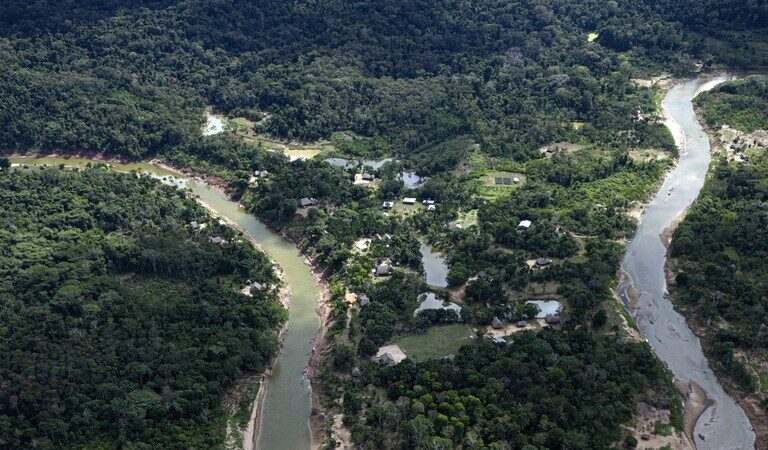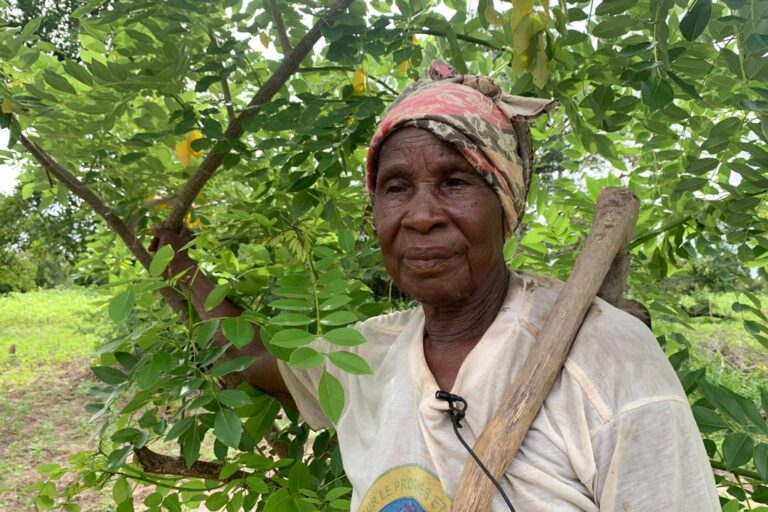
Conversion of rainforest in Sabah, Malaysia for palm oil production. Photo by Rhett A. Butler.
A team of researchers has identified 125 million hectares (309 million acres) of land suitable for agricultural expansion that won’t come at the expense of tropical forests.
The study, published in Conservation Letters, argues that shifting agricultural expansion away from forests to these “degraded lands” would avoid 13 billion tons of carbon dioxide emissions that would be released were forests converted for plantations, pasture, and croplands. Those emissions are roughly equivalent to the amount released annually by the world’s coal plants.
The findings are based on a model that maps the tropics according to “Above Ground Carbon Density”, or the amount of carbon stored in vegetation, like leaves, branches, and trunks of trees. This information is derived from satellite data calibrated by on-the-ground field measurements of carbon stocks. In an effort to avoid blind conversion of low carbon areas (defined as having less than 40 tons of above-ground carbon) that might have high biodiversity and ecosystem service value, the algorithm excludes protected areas, “rare habitats”, steep slopes, and zones with high endemism. It also excludes existing agriculture and urban areas.
The authors, led by Eric Dinerstein, a researcher at RESOLVE and the World Resources Institute, argue that the approach could help guide forest-friendly agricultural expansion in the tropics.
“Commodity crop expansion in the tropics presents the challenge of preserving tropical moist forest ecosystems and their role in carbon sequestration,” they write. “The simplicity and transparency of this easily monitored metric could prove useful to producers, governments, investors, environmental stewards, and consumers and enhance good governance in tropical regions.”

Global Forest Watch, an online mapping platform with data on forests, has an agricultural suitability layer that incorporates information about forests, peatlands, and biodiversity to suggest areas that should be off-limits for forest-friendly agricultural expansion. Click either image to enlarge.
Agricultural expansion to meet growing human population and even faster rising resource consumption is expected to be increasingly concentrated in the tropics, where there remain vast areas of land suitable for crops like oil palm, soy, and rice. However tropical ecosystems also support the bulk of global biodiversity and play a disproportionately important role in storing carbon and maintaining precipitation patterns. Therefore potential agricultural expansion into tropical habitats is a major concern to scientists and environmentalists.
The effects of agricultural expansion are already being felt in tropical forests, woodlands, swamps, and grasslands. Industrial commodity production is now the largest single driver of deforestation, which accounts for roughly a tenth of carbon emissions from land activities and represents the biggest near-term threat to wildlife in the tropics.
CITATION: Dinerstein, E., Baccini, A., Anderson, M., Fiske, G., Wikramanayake, E., McLaughlin, D., Powell, G., Olson, D. and Joshi, A. (2014), Guiding Agricultural Expansion to Spare Tropical Forests. Conservation Letters. doi: 10.1111/conl.12149















